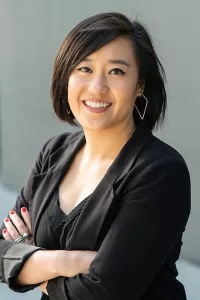For many older adults, the COVID-19 pandemic has left lasting impacts on their lives.
Jessica Finlay, a professor at the University of Colorado Boulder, surveyed roughly 7,000 people ages 55 or older from all 50 states. She found more than half of older adults spend more time at home and less time socializing in public spaces since the pandemic.
“The pandemic is not over for many folks, and it’s not a return back to complete pre-pandemic normal,” Finlay said. “People still find certain places challenging for varied reasons.”

Finlay began the survey shortly after the pandemic began in 2020 and has continued to follow up with participants to see how their lives are impacted over time. The results show that 59% of people reported spending more time at home and 75% eat out less often. The survey also showed that 57% exercised indoors less, 62% visited an arts or cultural site less and 53% attended religious services less often.
“A lot of our society has snapped back, let’s say, to maybe not pre-COVID normal but a new normal and has re-engaged,” Finlay said. “But there’s a lot of privilege embedded in that ability to return … and then there are many folks that are being left behind.”
Jarmin Yeh, a professor at the University of California San Francisco, was part of the analysis team for the open-ended survey responses. Yeh said places like grocery stores, churches and airports changed in meaning and safety for older adults. Many are afraid of getting sick or infecting immuno-compromised loved ones.
Others reported being yelled at or judged when wearing a mask in public.
“We don’t want to further divide society, so I hope we draw attention to those being left behind,” Finlay said. “I hope we can encourage more public policy and community efforts to support a variety of folks.”

Yeh said the pandemic was an opportunity to develop creative ideas to meet people’s health and social needs.
“I think one of the neat things that came out of the pandemic, at least momentarily, were these pop-up dining rooms where restaurants have outdoor seating on sidewalks,” Yeh said, adding, “As the years went by, and the fear of the pandemic reduced, these neat arrangements went away.”
Finlay said there’s power in small interactions for people of all ages. That could include encountering people at daycare pickup, making small talk with the cashier at a grocery store or spending time in a public park or coffee shop.
“It’s those kind of informal ties, those community ways of just encountering people,” Finlay said, adding, “People talk about losing that contact and the scientific literature tells us that that contact is literally protective of individual health. Having a diversity and greater number of different social ties has been linked to living longer and living healthier.”
Yeh said the pandemic was a moment to pause and rethink urban planning and the importance of having a wide variety of places and policies that accommodate various needs.
“We don’t often think about how our social or built environments also influence how we feel and how we’re able to be healthy or not,” Yeh said.
Finlay said there’s a need to continue to have open-air and outdoor spaces, well-ventilated indoor spaces and mask-encouraged events. On the individual level, she said it can make a difference to smile and greet people on the street and be aware of the importance of togetherness, even if it’s simply existing in a place alone like a park where people are around.
“We will have more pandemics, we will have more emergencies, and we need to think about how to support everyone,” Finlay said.